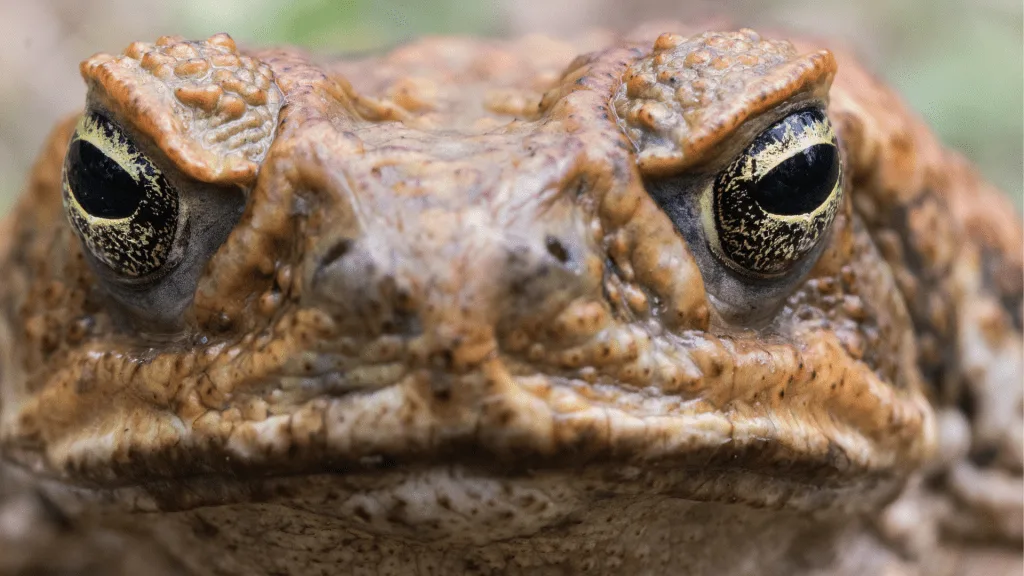Remember when adults were shocked that “kids these days” were chewing on Tide Pods? A post from the National Park Service (NPS) reminded us of a trend that proves the previous generations weren’t so innocent. Did you forget about the 1980s toad-licking fad? Well, we haven’t!
Today, we’re sharing one of the strangest fads we’ve ever heard. There have been some odd trends, but this one takes the cake. Let’s hop in and get started!
What Is the 1980s Toad-Licking Fad?
People were doing some silly things long before TikTok challenges existed. The 1980s toad-licking fad is a prime example. People were licking Sonoran desert toads because they liked how the toads made them feel. They’d often experience psychedelic and hallucinogenic effects after licking them.
While it may sound ridiculous or unbelievable, there’s a section on Poison Control’s website warning against it. The origins of the fad are unclear. Perhaps it even resulted from a desperate single lady attempting to find her prince charming.
Why Do People Lick Toads?
There are several types of Bufo toads, which people predominantly find throughout the southwest United States. These toads secrete toxins through poison glands on their backs and behind their eyes. The toxins include hallucinogenic tryptamines, specifically 5-MeO-DMT.
People who licked the toads liked the feeling it gave them. They’d experience short and intense hallucinations. Some episodes would last upwards of 30 minutes before the toxin lost its effectiveness or wore off. For those willing to risk their health and lick a frog, the high was a unique experience.
Do we recommend licking toads? Absolutely not.

Which Toad Is Toxic If You Lick It?
The Sonoran Desert Toad, which people call the Colorado River toad, is toxic. While there are typically not enough toxins in the poison to kill a human, it can make you feel incredibly ill. This is especially true if it gets into your mouth, but sometimes, simply touching it can do the job. Be sure to keep your pets away from it.
About the Sonoran Desert Toad
The Sonoran Desert Toad is approximately seven inches or more in size. It’s so large that it takes the crown as the largest toad in North America. They’re typically in Arizona, New Mexico, California, and Mexico. As its name implies, you’ll normally find it in or around the Sonoran Desert.
While the toad’s toxin is not enough to kill you, it could take out your dog or cat. The toad secretes a strong enough poison that could easily kill most dogs, especially if they pick up the toad in their mouth. If you notice your dog pawing at its mouth, drooling, or displaying odd behavior, you should take them to a veterinarian as quickly as possible.
The toads typically spend most of the year underground and wait for the dry season. Once the dry season starts, you’re more likely to see them out and about. If you have dog doors or leave them open, they may even come inside and make themselves home.
Pro Tip: We took a closer look at Safety vs Seclusion: Can Campers Have Both?

What Is the Main Psychedelic Chemical Found in the Sonoran Desert Toad?
The main psychedelic chemical in the Sonoran Desert Toad is 5-MeO-DMT. In the United States, it’s an illegal substance. Law enforcement typically categorizes it as a Schedule 1 substance. However, people harvesting its venom have led to it becoming extinct in many states.
There’s been very little research on the effectiveness of the chemical. However, some studies have shown that those taking 5-MeO-DMT often report higher levels of satisfaction with life and lower levels of anxiety and depression.
Is 5-MeO-DMT Safe for Humans?
In general, 5-MeO-DMT is safe in the correct dosage. It has intense short-term experiences for those who partake in it. There are no widespread occurrences of people becoming gravely ill due to it. In addition, Some of the most prominent medical researchers in the industry are researching its effects on human behavior. They’re looking at the long-term therapeutic effects it can have on individuals struggling with anxiety and depression.
Where Are Sonoran Desert Toads Found?
You can find the Sonoran Desert Toad in extreme southeast California, Arizona, southern New Mexico, and northern Mexico. You’ll typically find them in bush-mesquite lowlands and other thick grasslands. However, they also live around groves of sycamore, oak, and Walnut trees throughout forests in Mexico.
Pro Tip: Staying safe while camping is crucial. Find out Do Criminals Hide on Public Land?
Should You Avoid the Sonoran Desert Toads?
While the Sonoran Desert Toad poses little risk to humans, it’s not a good idea to go touching, kissing, or licking these toads. The only way you’ll find your prince charming by putting your lips on a toad is if you end up in the hospital and form a connection with a nurse or doctor. Give them distance and keep your pets away from them. They’re at a greater risk than you are, and the consequences can be tragic.
What generational fad do you think is the strangest? Tell us in the comments!
Discover the Best Free Camping Across the USA
To be honest with you, we hate paying for camping. There are so many free campsites in America (with complete privacy).
You should give it a try!
As a matter of fact, these free campsites are yours. Every time you pay federal taxes, you’re contributing to these lands.
Become a FREE CAMPING INSIDER and join the 100,000 campers that love to score the best site!
We’ll send you the 50 Best Free Campsites in the USA (one per state). Access the list by submitting your email below: